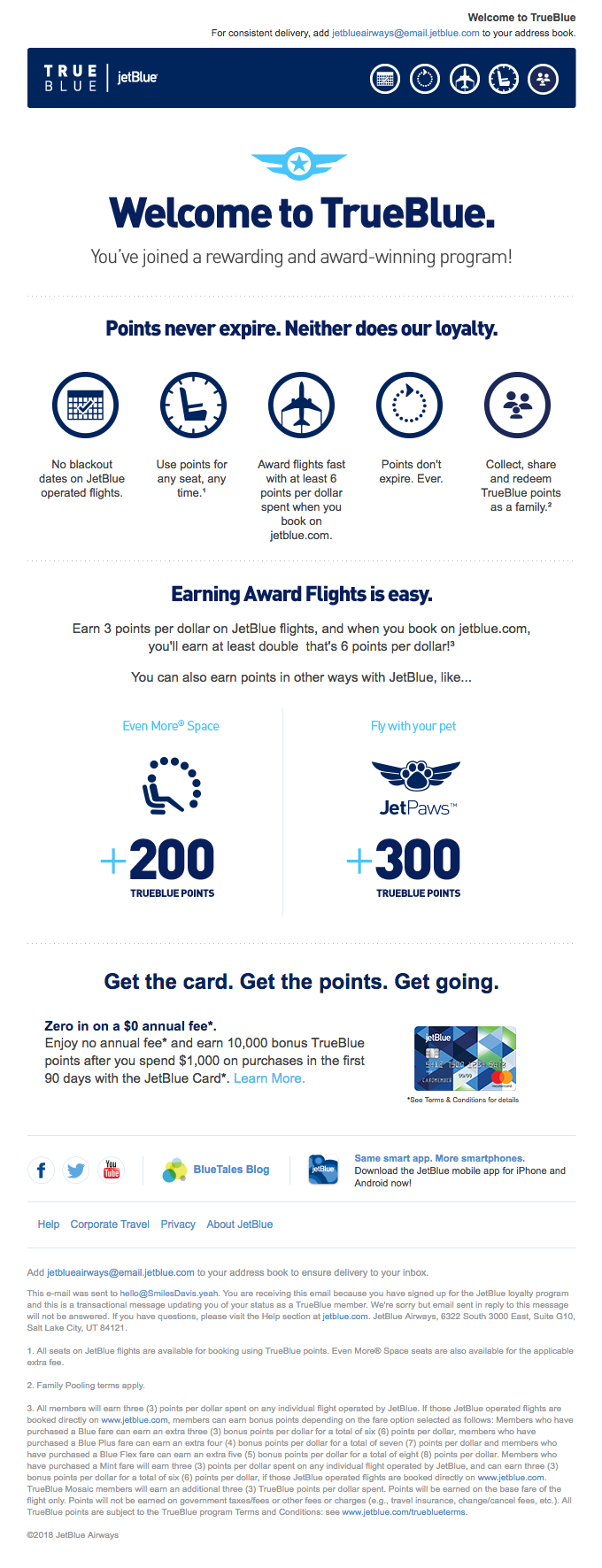Getting people’s attention with a flashy piece of marketing collateral is one thing — but once you’ve caught their eye, what are you going to tell them?
Your brand needs substance to go with its style, and this is where content writing comes in. Whether it’s a few hundred words in an email, a few hundred characters in a social media post or pages of in-depth info in a white paper, your content expresses your brand’s viewpoint.
By focusing on the craft of content writing, you can inform and entertain your audience. Content marketing is your half of a conversation with your customers, and it’s also one of your primary search engine optimization tools.
Not bad for a less-flashy kind of content.
What Is Content Writing?
Content writing is the process of creating text assets for your brand. Whether the item in question is long or short, and no matter what channel you’ll use to deliver it, it’s content.
Brands have been engaging in content writing for as long as they’ve existed. Text-rich ads have enticed customers in print for centuries. Recent years have added new content channels and objectives such as SEO content writing, but the building blocks are the same as ever.
The fact that the written word is so familiar is both a strength and a challenge. On the good side, writing materials for clients to read is one of the most straightforward ways to serve them a message. On the other hand, because written content is so prevalent in a customer’s day-to-day life, you will have to find a way to make your message stand out.
Whatever kinds of content suit your brand best, there’s likely a way you can improve your production and get the results to match. Checking out real-world content writing examples is the best way to see how content writing might work for you.
4 Content Writing Examples
Great content is created in service of a goal. Rather than just existing, these pieces are created to get a specific reaction. Marketing goals for written content could include driving search traffic, answering urgent questions, or illuminating your brand’s mission.
For each of these aims, there are ideal content types and channels. By checking out successful examples across a range of different styles, you can keep your own content writing efforts on track, no matter what type of audience you’re targeting or reaction you’re hoping to elicit.
Here are 4 useful kinds of content writing, along with content writing examples that show how brands have made them work:

1. SEO Content Writing
Business content designed to attract searcher and search engine attention has taken a few different forms over the years, as SEO algorithms have evolved. These days, the kinds of posts that achieve big numbers tend to be comprehensive and detailed, packed with plenty of information your audience can use.
For an example of a powerfully optimized post, check out any of the sponsored articles posted to Investopedia. These are long, heavily researched articles vetted by Investopedia’s team for accuracy. They also carry all the hallmarks of modern SEO.

Note that the headings of the post are common terms that people might search for. Investopedia articles in general, both editorial and sponsor-contributed, tend to rank very highly in search results because they spotlight these relevant items at great length.
Of course, hitting an SEO bullseye with your word choice isn’t something that just happens. As a content writer, you can use tools such as MarketMuse or Semrush to make sure you’re covering the types of topics and phrases your target audience is searching for.
Subscribe to
The Content Marketer
Get weekly insights, advice and opinions about all things digital marketing.
Thank you for subscribing to The Content Marketer!
2. Web Content Writing
Beyond being written purely for SEO, content can act as an essential part of a website, helping visitors learn about your products or brand identity as they get closer to a purchase. This writing should have a strong „voice“ to it, making viewers feel like they’re getting to know your company rather than just reading a list of facts.
As part of its image recovery following bankruptcy, fashion retailer Neiman Marcus went for a flashy web content approach that echoes glossy magazine spreads and showcases its collections in words, images and video.

The paragraphs of text here are short and functional, painting a picture for shoppers about why a particular product might be for them. The imagery does a lot of work, but the words aren’t just placeholders. They highlight practical features of the clothes in question with more style than a bullet point list would have.
Also important: This web content is closely aligned with the retailer’s online store. Links throughout the magazine-style pages will bring readers to the relevant collection in the online storefront. The path from excitement to purchase can be very short with well-written website content.
3. Email Content Copywriting
Email content writing is complex because form should always follow function. Email can serve many roles for your business. Warming up new inbound leads? Following up on a purchase? Informing customers of a sale? Staying in touch with mailing list members? Email can do all these things and more.
For an example of a functional email that gets its message across, you can check out the materials JetBlue sends to customers. Considering the logistical work involved with getting travelers to their flights, there is a lot of functional copy in these emails. They also contain quick links to learn more about JetBlue features and offerings in a friendly, light voice.

The tone remains consistent across the many emails sent by the airline, though they fulfill a variety of functions. Some are designed to remind passengers of security policies, others include offers to join preferred traveler programs, still more are mostly about perks available on JetBlue planes.
Copy in emails should be short enough that recipients will read it instead of clicking away, and also tailored to the situation. A content writer must always remember why a customer is receiving a particular email, and get that message across, all while holding onto a recognizable brand voice.
4. Content Writing for Social Media
Writing for social media is a huge part of any content marketing push today, one defined by its limitations. Short character limits and a focus on easy-to-consume visual media put a content writer into a unique situation when creating social media posts. That doesn’t mean you should take these short bursts of text for granted, however.
To see a major brand having some fun with its social media strategy, look no further than Major League Baseball on Twitter. Considering baseball’s reputation as an old-fashioned and change-resistant sport, you may expect it to have a slightly stilted social media game. Not so. Captions for tweets are often single snappy or funny sentences, with correctly deployed emojis. These posts rack up thousands of likes and retweets, spreading baseball highlights far and wide.
For posts written by experts that draw on the absurdly deep catalog of baseball statistics, there’s a whole separate Twitter account, MLBStats. The main account and its focused sub-accounts can retweet one another to get added eyes on content written in various branded voices, some serious and others lighthearted.
La Tortuga PAINTS the corner. pic.twitter.com/xDLyd5AoE7
— MLB (@MLB) August 27, 2021
The story is the same on Instagram — short captions that get to the point, leaving room for fans to comment and share. The numbers are even more impressive there, with hundreds of thousands of likes for top posts.
Is your brand ready for the show?
Since social media writing is such a broad and unique area of content creation, it’s worth isolating a few useful lessons from the way MLB produces its content:
- Keep the writing short and pithy. People will be scrolling quickly — don’t give them a chance to get bored.
- Be sure to tag other accounts correctly. If those popular people or brands share the post, that’s a whole new audience for your post.
- Shape your content to the platform. This could be reflected in the length of text, your choice of hashtags or the adjustment of tone to fit the network’s main audience.
- Pick a voice and stick to it. Instead of sharing stat content on its main account, MLB created a whole second channel. This let it keep its main voice undiluted.
Though all social media platforms are different, these same principles ring true. Whether you’re writing for Facebook, LinkedIn, TikTok or anything in between, the general rule with social media posts is to find the perfect medium between your brand voice and the platform’s audience.
Good vs. Bad Content Writing
In the end, good content writing is what works for the situation. Being an effective content writer means finding the versatility to create SEO content, blog post text, web copy, email content, social media posts and any other type of deliverable, as the situation demands.
Written content should be created with an objective in mind, and when content moves the brand closer to that goal, that’s the mark of good content. This means it’s important to study the effects of your pieces after you’ve published them. You need to know whether the previous piece worked as intended, to shape the next one.
Content is such a broad umbrella category, that it can do whatever your brand needs it to from a marketing perspective. So, the question is: What will your next piece of content writing achieve?





